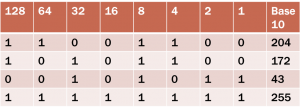In what feels like a long time coming I passed the sans 503 exam today. One thing I learned is that my index could have been better. How I set it up and thought would help me, was not really the case. I started off really well, being able to find and rely upon my index to help me out in the area’s I needed to check my books, just to confirm my answers. 30 questions in I’m at 96%, so far so good. 90 questions in 84% – still good at this point, more than half way I’m feeling confident and have about 2 hours left at this point.
Then I seemed to have several questions based on information I could not find in my index, and on area’s that are weaker for me, like DNS. My impression was soon as it discovered a weaker area, you would be asked several questions in this area – at least that is how it felt.
If I had studied other sans exams before this one, I would have been able to create a better index and no doubt scored a better mark. All things considered, this is my first certification in many years and I’m happy that I have passed with a 77%, not the score I was aiming for, but towards the end all I wanted to do was finish those questions and get out of there.
I have the 401 exam booked for 4 weeks time, I now need to create my index for this one, with it being an easier exam content wise, and now my experience gained from this one, I should hopefully be able to score very well.
Time will tell.

